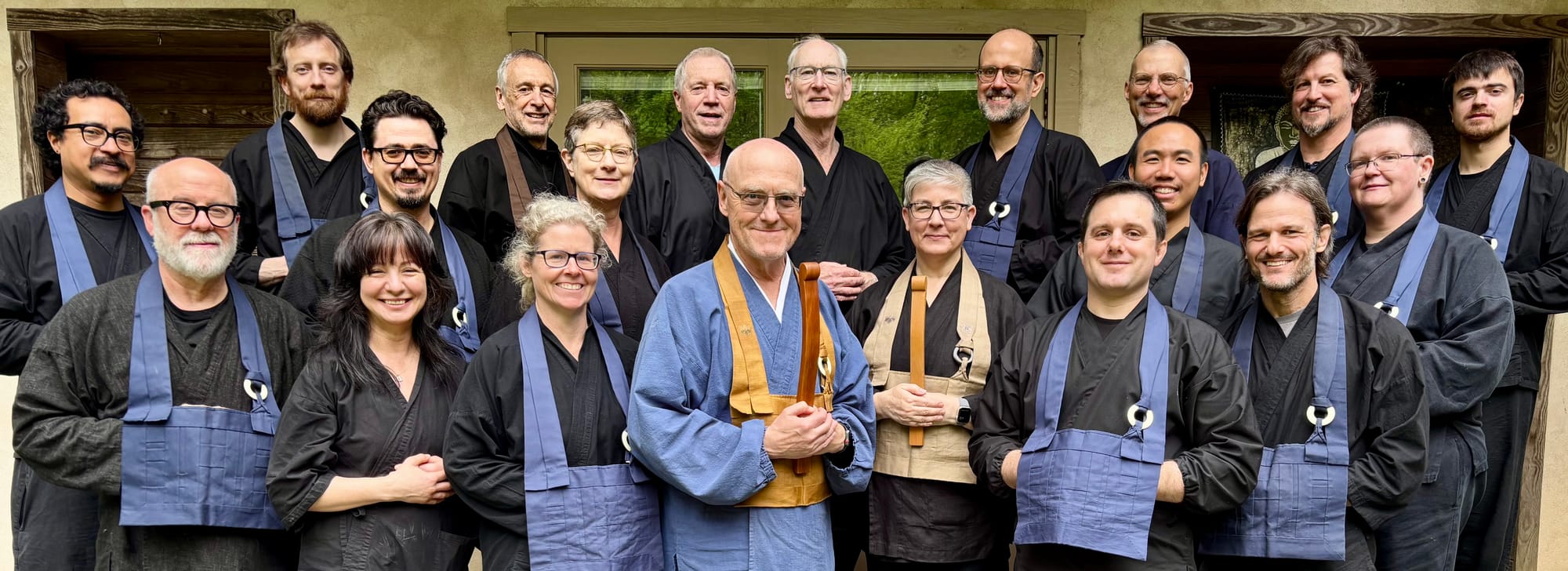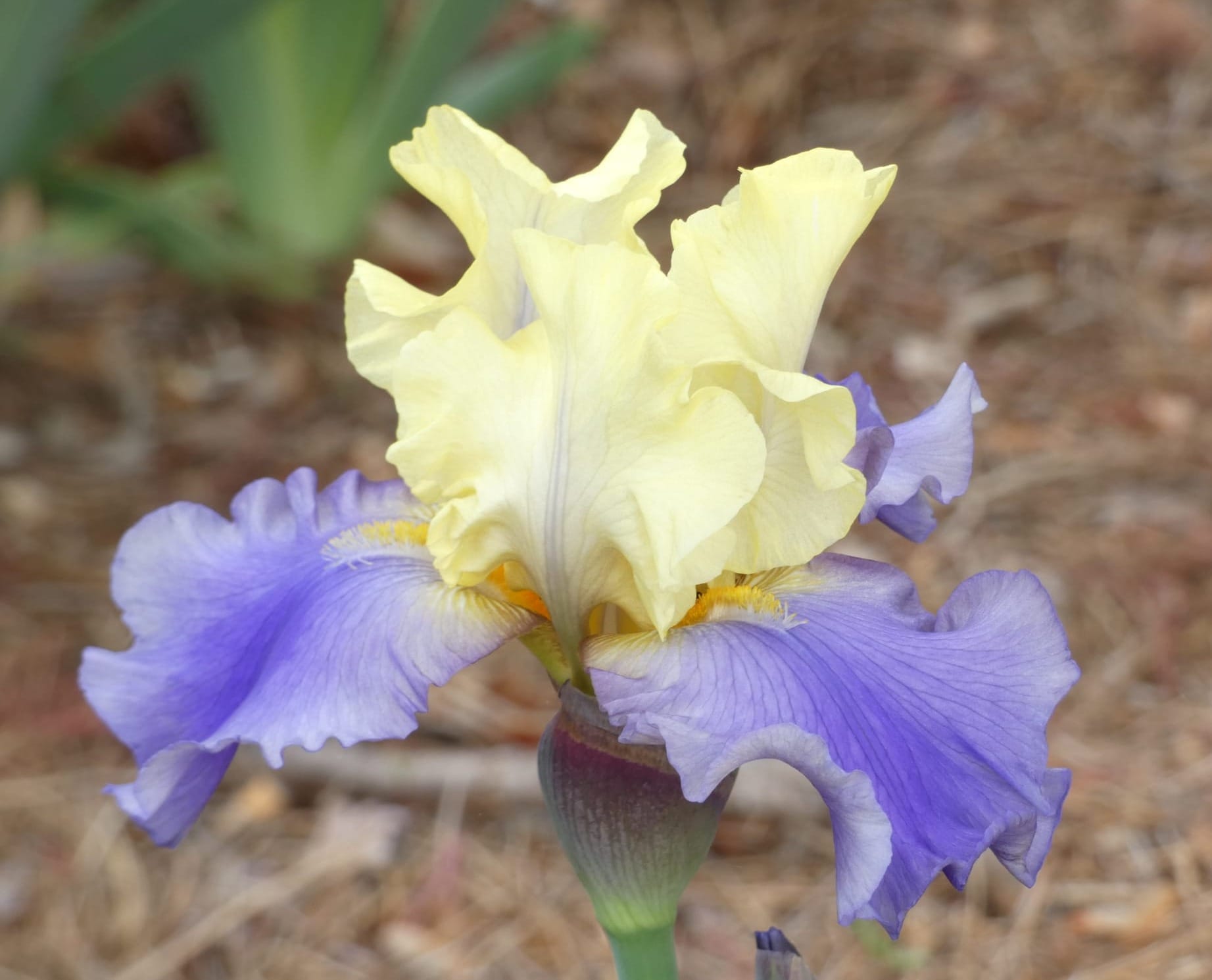How Can We Carry the Jewel Close to Our Heart?
If you are not clear about this, turn the light around to illuminate, and then you'll know with great relief that the luminous jewel is what you are.

The theme from our recent sesshin was "turn the light around to illuminate." In our dharma talks, Tetsugan Sensei and I unpacked passages from a wide range of dharma masters through time and space that highlighted this essential practice, including Zhiyi, Bodhidharma, Huineng, Mazu, Shitou, Linji, Dahui, Chinul, Dogen, and Yondam Yuil. Our aim was to explore the essence of the teachings of these great masters in the subtle detail; that's where we find the jewel.
Vine students from around the US as well as Thailand and Spain attended the sesshin. As one practitioner said in our closing circle, "When I consider where I've been in my life, it's a miracle to be here with you all." I think we all felt the same.
Unlike almost all Zen offerings in these dark days for the world and the dharma, where more often than not "awakening" is an organizational soundbite or an object of belief, our focus is on vivid awakening and post-awakening training. We offer an innovative structure for householders to actually awaken – not just believe in it or, worse yet, pay lip service to it – and to follow through post-awakening, applying the subtle truth in the nitty-gritty of everyday life.
The Vine of Obstacles Zen online-training program is both innovative and effective. In the closing circle for the recent in-person sesshin, student after student noted the focus and power of a training group coming together to do this deep work as a qualitatively different experience than in other settings they've been in.
This post, a bit longer than usual following our posting hiatus during sesshin, focuses on the meaning of the essential instruction to "turn the light around to illuminate" by outlining out what it is and isn't. I'll also offer you an original translation of Dogen's teaching on this point with annotations.
See the recent sesshin group photo and more about Vine training here:

Turn the light around to illuminate
Whatever your primary practice (counting the breath, following the breath, initial koan, subsequent koans, or shikantaza), what works within the method is simply this – turn the light around to illuminate. If you haven’t mastered this fully (and unless you are fully awakened, you haven't), I encourage you to explore this practice instruction carefully and with a subtle touch.
The best way to discover the meaning of turning the light around to illuminate is to take up a koan like Mu, and be seen all the way through, and then to apply this realization through the night and day while sitting, standing, walking and lying down.
In any case, first, let's look at what turning the light around is not. To turn, illumine, and see is not simply to be aware of your thoughts, bodily sensations, and passing emotions. Indeed, to be aware of thoughts, bodily sensations, and passing emotions is precisely not turning the light around. Instead, when mistaken cognition (aka, thought, bodily sensations, and passing emotions) arises – like right now – turn, illumine, and see self nature.
To turn the light around is also not to meet afflictions by overriding the moment with a self-soothing dharma narrative. This strategy (contrary to about 99% of what you see written about mindfulness and meditation today) is also to miss the opportunity to see self nature.
For example, when faced with a day of family or work obligations, "self-soothing dharma narratives" include reminding yourself that all things change, or that daily life is practice, or even by taking full responsibility for one's choices for this day of family or work obligations. These are wholesome strategies that offer short-term relief and are better than wallowing in suffering. Still, such damage control lacks the transformative power of turning the light around. So instead of temporary coping methods, in the very moment of an afflictive state, the practice is to turn the light around and see the self nature of greed, anger, or ignorance.

To see self nature is to see that the mind is truly a mirror with no dust. To see self nature is to embody nondual intimacy where "you are not it, but in fact, it is you," as the great old teacher Dongshan said. To see the self nature of sounds, colors, thoughts, and feelings is to subtly, delicately, thoroughly turn without moving. To see self nature is to realize constancy, bliss, self, and purity.
If you’re working with counting or following the breath, turn the light around to illuminate the breath, seeing self nature. While you’re working with the breath, when awareness of other things arises – feelings, sounds, colors, thoughts – turn the light around to illuminate, seeing self nature. If you’re working with Mu, when things other than Mu seem to arise, turn the light around to illuminate, seeing self nature.
If you’ve truly seen Mu, then you have had a taste of turning the light around. Now the task is to turn the light around through all of the successive koans and within the full range of greed, anger, and ignorance.
‘Turn the light around to illuminate” applies to all the other methods we’ve taught recently too, including the four features of thought – pre-thought; immanent thought; thinking-in-progress; and concluded-thought. The thought-feature of immanent thought has the most potential for first seeing nature, so attend carefully to those fleeting moments. More about the four features here:

When confused about your native place
Now I'll offer the Dogen passage I mentioned above to connect what I've said to the received tradition. As I mentioned above, and as Tetsugan Sensei and I unpacked in our sesshin talks, the essential meaning of Dogen's teaching is in harmony with Zhiyi, Bodhidharma, Huineng, Mazu, Shitou, Linji, Dahui, Chinul, or Yondam Yuil. Of course, each of these masters had their own style and spoke from within their particular historical context.
It is notable that a cursory reading of Dogen often leads to the inaccurate conclusion that his underlying meaning was distinct from the luminaries listed above. However, Dogen himself goes to considerable lengths to position himself within the stream of Buddhas and Ancestors, not as the founder of a new anti-awakening religion as the Post-Meiji Soto Orthodoxy (PMSO) asserts.
More about PMSO here:

Granted, reading Dogen without a well-trained teacher is difficult and increases the likelihood of misunderstanding. The difficulty of grokking Dogen's essential meaning is exacerbated by his use of many technical terms, hidden references to koans and sutras (often several of such within the same sentence), and his complex, poetry-like prose presentation.
My intention in what follows is to demonstrate that Dogen's essential meaning sings the same tune as this wide range of dharma masters. That is, when one digs into Dogen's words with the same detailed approach that he encouraged for walking, sitting, shitting, and lying down, one finds that he fully concurred with the One School perspective. In future posts, I'll return to this topic and share some of the other great masters' radiant teachings, starting with Linji.
More on One School coming soon (you're invited):

The unpolished jewel
Now, I offer you our Vine in-house translation of Dogen's Eihei koroku 282 in the lavender text box. The phrases that are bolded in the text box are annotated below.
One who goes from home-to-home refers to a type of stream-enterer, so-called because they go 'from home-to-home' in their remaining rebirths in good families (three maximum, as sages or celestial beings). Stream-enterers have eliminated coarse afflictions (greed, anger, and ignorance) of the desire realm. It is notable that Dogen embraces this system of development for the path of awakening that is prominent in the teaching of the Pali Canon, the Chinese Agamas, and Tendai, his home tradition and probably what he was thinking of.
Also notable is the tension between the first and second sentences – everyone grasps the jewel, but those who've entered the Way experientially, naturally grasp the still unpolished jewel. This is a point made repeatedly in the sutras, for example, in The Flower Garland Sutra:
“Now I see that everywhere all living beings have the wisdom and virtue of the Tathagata, but because of delusion and attachment they cannot verify it.”
unpolished jewel of Affliction Mountain refers to a quirky story that is often told in Zen texts in the classical period. It seems that a person named Bianhe found an unpolished jewel on Affliction Mountain and presented it as an offering to King Severe. But the king thought it was a fake, so he had Bianhe's left leg cut off. Undeterred, Bianhe presented the unpolished jewel to King Martial. But he too accused Bianhe of offering a fake jewel, so he had Bianheʼs right leg cut off. Still undeterred, Bianhe presented the still unpolished jewel to King Civil, who had the jewel polished and found that it was a luminous jewel after all.
Dogen's reference to the jewel of Affliction Mountain reiterates his point about stream-enterers going from home-to-home through three more rebirths in that Bianhe goes from sovereign-to-sovereign three times. And Bianhe losing a leg at the first two stops is like the dharma process where something is lost in each stage of the journey (e.g., attachment to greed, anger, and ignorance).
Dogen's further point here is that only through polishing (aka, cultivating conduct or in Japanese, shugyo) can one verify that the unpolished jewel is indeed a luminous jewel. Further, the one who finds what they believe to be a jewel must offer it to another. Then, finally, they might have the great good fortune to find a good friend who tests whether the unpolished jewel is in fact a jewel. This sovereign-to-sovereign process echos the process of verification in the teacher-student relationship.
turned the light around to illuminate: with this phrase, Dogen identifies the essential method for polishing the jewel. That is, to paraphrase, "If you haven't turned the light around to illuminate, you don't know who (or where) you are, and when the shit hits, the jewel will not be accessible." Note that for Dogen, there is turning the light around and not turning the light around, i.e, awakening and non-awakening. And the method for awakening is to turn the light around to illuminate.
Therefore, to reiterate my often-repeated One School theme, Dogen's essential teaching was the same as many other great masters, including Zhiyi (the founder of Tendai), Bodhidharma (the founder of Zen in China), Huineng (the Sixth Chinese Ancestor), Mazu (the great popularizer of the Sixth Ancestor's dharma), Shitou (the founder of the Soto line), Linji (the founder of the Rinzai line), Dahui (the founder of the keyword method), Chinul (the founder of the Zen/Son line in Korea), and Yondam Yuil (an 18th Century Son master in Korea).
Moving on, valley spirit, to paraphrase the Digital Dictionary of Buddhism, refers to an inconceivable power that gives birth and nurtures inexhaustibly. Here, it is an “empty-valley spirit.” That is, the source of echoes. When the ear accords it is like an echo – there is nothing added. When the eye accords, each dharma as-it-is is fully illuminated. Like the Buddha of the Pali Canon taught, "In the hearing, just the hearing, in the seeing, just the seeing."
If you seek outside for sound and color, refers to The Diamond Sutra where the Buddha says,
Seeking me by using form or color/seeking me by using the sound of my voice/a person walks a mistaken path/and cannot perceive the Tathagata
"Using" adds something to the sound and color and so one who so uses will not find the thus-come, thus-gone one (aka, Tathagata). True nature is found in intimate experience and not elsewhere. Sound and color (and the other sense objects – taste, touch, smell, and thought) are what are illuminated when we turn the light around. Indeed, it could be said that they find us. The importance of realizing self nature through sound and color is another theme that reverberates through the Zen tradition.
you’ve really twisted the meaning of Bodhidharma’s coming from the West: As for Bodhidharma coming from the West, coming from India to China, what was his essential message?
Bodhidharma taught in "The Dharma Gate of the Peaceful Mind," as translated by Thomas Yuho Kirchner (modified):
"One who can turn and illuminate with perfect clarity sees that the nature of greed, anger, and ignorance is none other than buddhanature. Besides greed, anger, and ignorance there is no other buddhanature."
Is that his essential meaning? Well, the great Caodong/Soto master Longya and the great Linji/Rinzai master Linji both taught that there is no meaning in Bodhidharma coming from the West. Yet, even "no meaning" can be made into a meaning. If so, no meaning would not be the untwisted meaning of Bodhidharma coming from the West.
What is the untwisted meaning?
Yellow Iris petals are yellow. Purple Iris petals are purple.

In the color, is there just the color, or are you making shit up?
Tetsugan Sensei often says, "The meaning is in the doing," and invites students to show that meaning. This is hard to do without a twist.
What is the untwisted meaning of Bodhidharma coming from the West?
If you are not clear about this, turn the light around to illuminate, and then you'll know with great relief that the luminous jewel is what you are.
Thank you for reading. Comments are open for paid subscribers.




